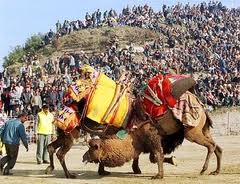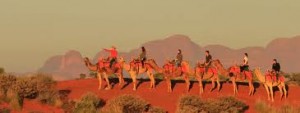
In a recent meeting with 40 Toronto Toastmasters, I asked if anyone of them ever saw a camel in Canada, or for that matter, had any idea of its origins. Five of them responded that they saw the beast in a Zoo, and two of them said that camels originated from Somalia.
It is a poorly known fact that camels originated from North America some 40 t0 50 million years ago, where they underwent most of their evolution. By that time, camels were the size of rabbits. By 35 million years ago, the camel was the size of a goat. During the Miocene (24 to 5 million years ago), camels increased in size with lengthening necks and limbs. Camels were confined to North America, having been most abundant in Southwestern Canada ( Alberta & Saskatchewan). Before the Ice Age Camels moved Northward to Alaska and then migrated westward across the Bering land bridge to Asia. Once in Asia, they spread to Eastern Europe, the Middle East, Central Asia ,North Africa , Horn of Africa and to Somaliland/Somalia.

Meanwhile, smaller members of the camel family moved southward via the Isthmus of Panama to South America and evolved into lamas. Camels vanished from North America coinciding with the migration of humans from Asia to North America. By the time the Europeans came, no members of the camel family lived in North America and no one knows exactly why they have disappeared .However, tracks of camels have been preserved in 11,000-year-old sediments at a site in Alberta.
According to FAO, there are about 17 million camels in the world, of which 12 million are found in Africa and 4.9 million in Asia. Of this estimated world population, 15.1 million are believed to be one-humped camels and 1.9 two-humped. It is noteworthy that the five neighboring countries of Somalia, Ethiopia, Sudan, Kenya and Djibouti together contain (60.1%) of the world’s camel population, while Somalia alone contains 31% of the global camel population.

Camels became extinct in their place of origin, North America, toward the close of the last glaciation. Few attempts were made to bring them back. The first attempt was made during the Gold rush to British Columbia. In 1862, John Calberth bought and imported 23 camels at 300 dollars each. He knew that camels could carry heavier loads for longer distances than donkeys, mules and horses. However, these camels were greeted with less enthusiasm by the local populace. A newspaper Editorial at the time wondered if camels would be followed by trained whales that would move people in Jonah fashion, referring to the survival of Prophet Jonah ( Yoonis) in the belly of a sea whale.

Cultures that use camels treat them with special reverence, while cultures that do not use camels view them as noxious. That is what happened in both Canada and the southern US. The marriage of gold miners and camels failed and by 1864, the animals were turned loose to wander and vanish into the woods.

On the other hand, in Somaliland/Somalia, the camel is the most highly valued animal. Before the introduction of the monetary system the camel was used as the basic unit of exchange. A good camel was equal in value to five cattle or 30 sheep/goats. Every Somali loves to own Camel , and the man who does not own , feels economically insecure. That is the main reason why the highest population of camels in the world is found in Somaliland/Somalia.
Ali Ibrahim “Baqdaadi”
Toronto Caateye2006@yahoo.com
























